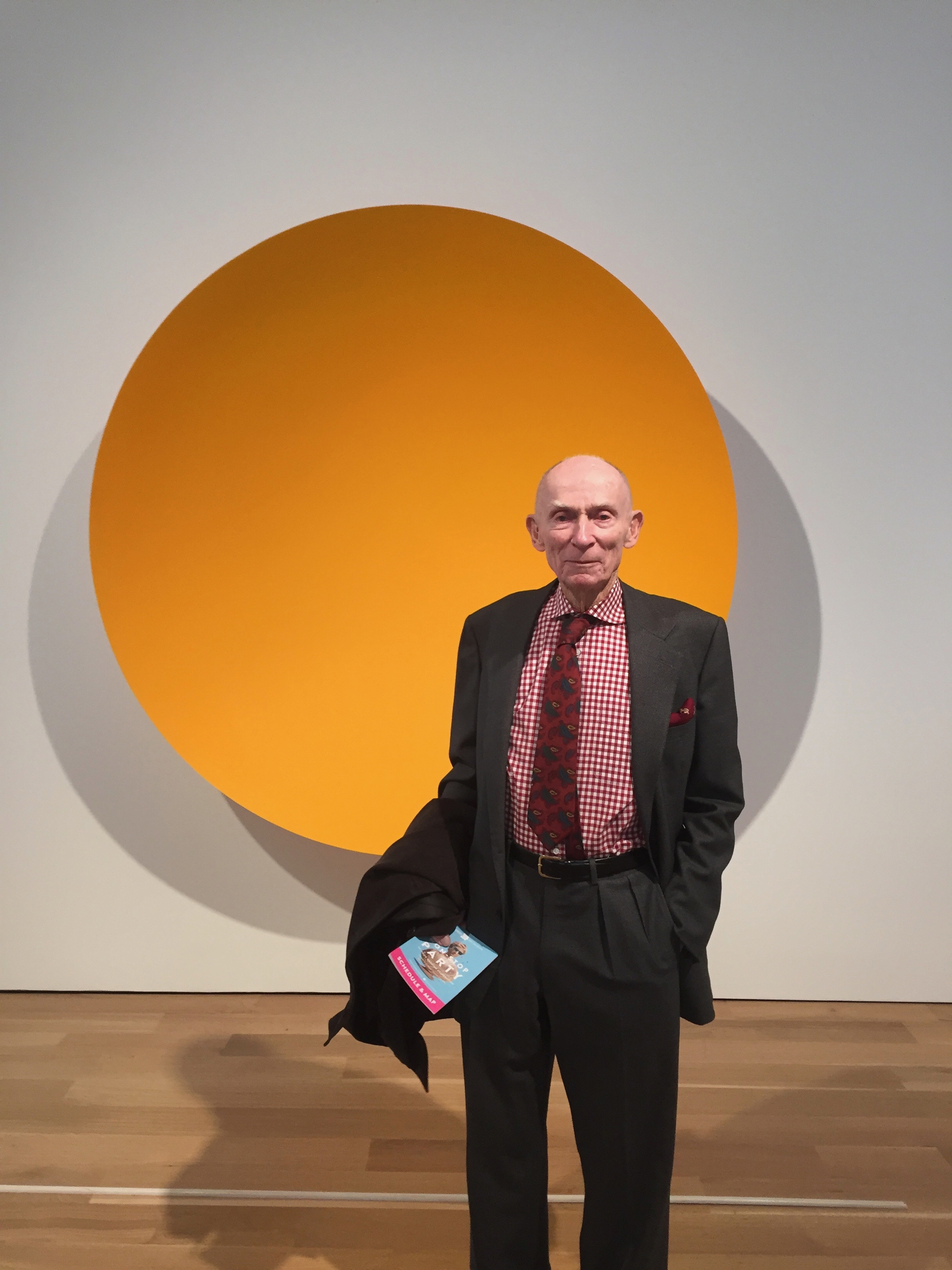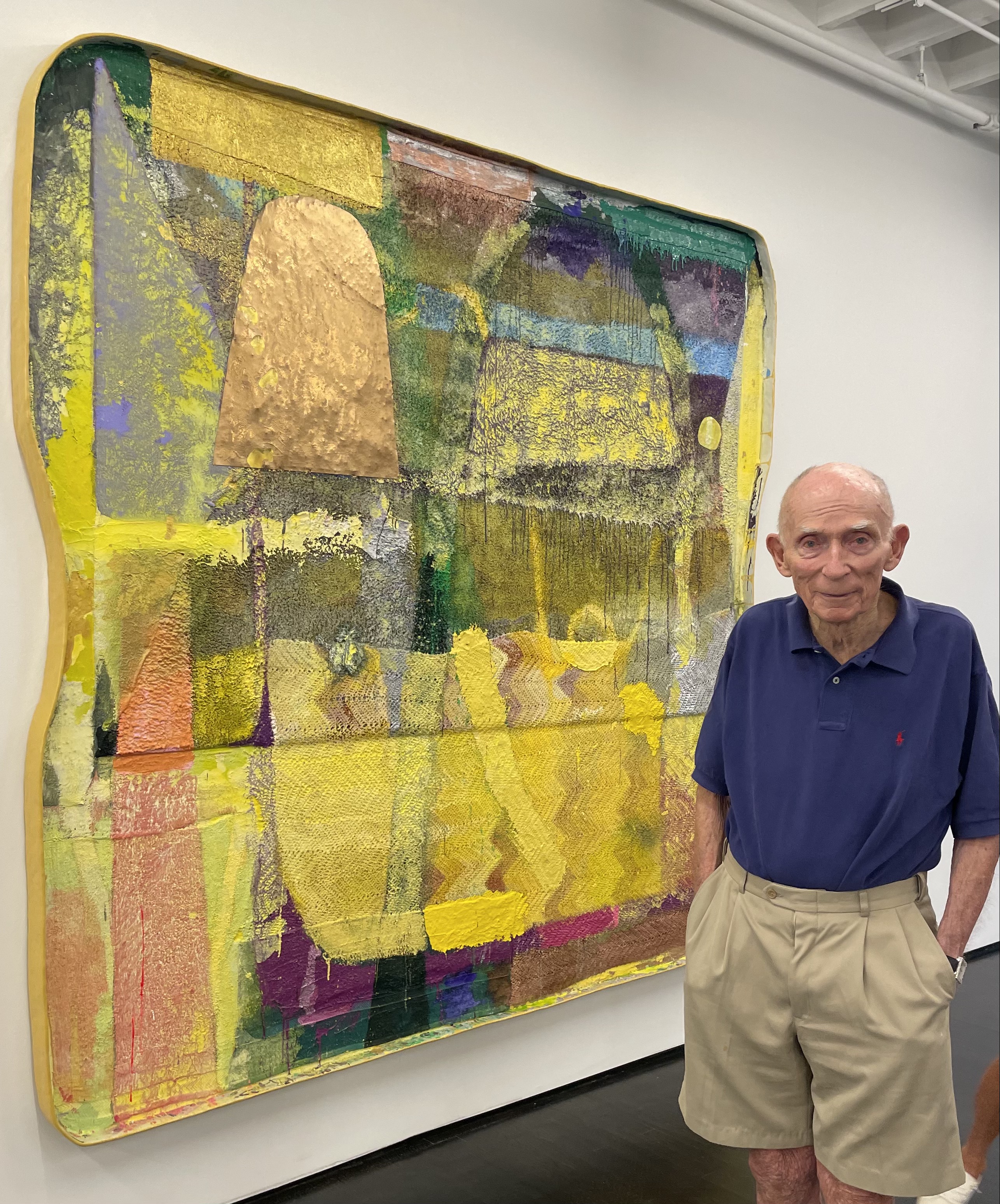
Al Shands in Retrospect
On September 22, 2021, in the rain amidst sculptures and installations collected throughout his life, a memorial service for Reverend Al Shands took place outside his late home, on the grounds of the Great Meadows estate. Those in attendance reflected the breadth of Shands’ reach, impact, and friendships. Artists, gallerists, collectors, educators, art handlers, museum workers, writers, curators, and others all gathered to bear witness to his memory in the home he had opened up to the community many times before. During his homily, Reverend Paul Jeanes III, a friend and pupil, said:
“There’s no way...I can adequately articulate the far reaching and lasting impact of Al’s life. That’s too complex….I can’t do justice to his life as a priest and a husband, father, friend, filmmaker, writer, art collector. Can’t do justice to any of those things—all those many facets of Al’s life. So, how do we honor our dear, beloved Al?1”
Julien Robson, Director of Great Meadows Foundation, curator, and friend, spoke about the beginnings of Shands’ curiosity surrounding visual art—that he and his late wife Mary Shands began collecting craft objects very often with narratives “about adversity.”2 He then became involved with the Speed Art Museum, the Whitney, and the MoMa, “and so the people that he was surrounded with started to grow and started to help inform the way that he thought about art.”3 A recurring theme when discussing Shands with his closest friends is this adventurous growth, this pursuit of change and knowledge. It follows, then, that he would think about his art collection as dynamic and ever-changing. Shands often referred to his collection as a “dinner party,” where each artwork could add to a conversation with the others.4 In this way, “good collectors are like curators,” says KMAC Museum curator Joey Yates, who saw Shands as influential in his curatorial education leading up to Yates’ time at KMAC.5
Despite this essence of being a “guidestar,” as Yates describes him,6 Shands was also well known for eliminating a sense of hierarchy between himself and the people around him. He had a “generous spirit,'' constantly asking himself, “How do I share this?”7 It’s easy to approach interactions with people who have such influence over a community as Shands did with a sense of due order, whether merited or not, yet Shands broke down these de facto barriers and really connected with people around him. “He knew a lot of people, and they knew him.”8 Robinson said of Shands, “He was actually a really likeable person, who had a great sense of humor, and again, that curiosity so that there wasn’t a sense of him treating you in any way that he was superior.”9
Likewise, Shands’ interest in art and artists was not about accruing status. Rather, Shands thought himself a “custodian of art.”10 Artist Mary Carothers tells a story about her experience moving an installation from the Louisville Riverwalk to Great Meadows. At first she thought, “Why would I want to move a site-specific work that was intended to tell the stories of the river...and the untold histories of people in the community to a place far more rural than its intended urban location?”11 At the time, Carother’s installation had undergone many repairs after it had been vandalized at its original location—it was made of delicate, porcelain casts and required a lot of labor for upkeep.12 After walking by the work many times on his daily strolls during the workday, Shands proposed to acquire the installation, asking Carothers, “Will you allow me to protect this artwork?”13 After meeting Shands personally and making a genuine connection, Carothers agreed to move the installation once the exhibition on the Riverwalk had run its course, stating, “It was the first time I felt understood by someone.” The word “protection” made that understanding “even deeper and more complex.” After the relocation, Carothers found herself revisiting the installation during moments where she needed to reflect. Unsure of an exact destination, Carothers would get in her car for a drive to clear her mind, arriving—often unannounced—at the foot of her sculpture at the Great Meadows estate. There, she was able to find respite.
Stories like Carothers’ are common when talking about Shands. When these artists questioned the trajectory of their life and work, Shands, a person with significant impact and undeniable authority, not only “appreciated” and “understood” artists—words shared among everyone interviewed for this piece—but encouraged them to stay on course. For creatives whose positions are rooted in nonconformity, acceptance by someone reputable and esteemed can be the cornerstone for perseverance, and Shands was that vital anchor for many people. It would be wrong to posit all the reasons why Shands might have been motivated to do so—it is impossible to know the complexities of a person’s mind in that way, but it is not speculation to say that, during Shands’ life, he greatly impacted some of the most forward-thinking minds in this region’s visual arts community, and his legacy is the foundation which champions these creatives and the change they will continue to bring about.
“He goes with you places,” said Louisville artist Vian Sora, reminiscing about trips taken with support from Great Meadows travel grants.14 She would discuss with Shands what she found on these trips “with the excitement of a child…”15 What Vian describes in her memories of Shands was a genuine friendship founded by their mutual passion for art—as well as his interest in Vian’s work—and cultivated by mutual understanding, respect, and inquisitiveness. In fact, Vian’s fondest memory of Shands was his 90th birthday party, which she hosted at her home. They were a part of each other's lives in this way. Similarly, Louisville artist Kiah Celeste found friendship with Shands upon her recent relocation to Kentucky,
“I felt this connection that I didn’t have with anyone else at the time because of the unspeakable communication we had through my work and his appreciation for it. It seems he felt it too—fiercely supporting me and my work....The art kept him going, it was his driving force, just like it is mine, and we both understood the position we held in each other’s lives to keep that force going. Our relationship was unlike any I had before, one that has changed the trajectory of my life for the better, contributed significantly to my growth, and one I cherished and cared for profoundly.16”
It’s often said that Shands loved artists because they think about and see the world differently.17 He opened his home to the community and furnished grants to expand the critical growth of the visual arts in the region. He loved to collect, see, and discover, and it was this curiosity that fueled his lifelong pursuit of the unexplored. Just as the dialogue between his collection changed with every added artwork, so too did Shands. No static objects resided at Great Meadows, nor was there any fixedness of thought. The Great Meadows estate, the Foundation, and its goals all represent a presence of life and dynamism, an embrace of fluidity and ideas in flux. Rev. Jeanes' homily goes on to say,
“Al looked at the world and encountered the world in a wonderfully special way. He saw all of the colors, he felt the textures, he heard the sounds, and then...he invited us to embrace the beauty and to embrace the mystery. He invited us to…[the] creativity and the life that was all around us, and the creativity and the life that was all…within us….He invited us to join him in the never ending journey of discovery.18”
So then, perhaps to honor Shands is to adopt this mode of thought, to embrace the changes within us and within our community, to strive for growth, and to refuse complacency. Maybe, to honor him is to connect with each other as artists, thinkers, and participants in our community, to open up our worlds to others, and connect. It could be that to honor him is to travel, learn, and bring back newfound insight to the region, share it, explore more, and share again. Maybe there is exploration to be had simply by slowing down, by taking in the world around us that we might see the shimmer of its mystery, because “what might have been and what has been, point to one end, which is always present.”19 This plain act of presence may be enough to honor the spirit of Al Shands, the adventurer.
-
Citations:
- Rev. Paul Jeanes III, Funeral Homily, 22 September 2021, published to YouTube 25 September 2021
- Julien Robson, in-person interview, 4 October 2021
- Ibid.
- Ibid.
- Joey Yates, in-person interview, 8 October 2021
- Ibid.
- Ibid., “this” refers to Al’s collection and resources
- Robson
- Robson
- Robson
- Mary Carothers, virtual interview, 12 October 2021
- Ibid.
- Ibid.
- Vian Sora, in-person interview, 25 October 2021
- Ibid.
- Kiah Celeste, written, virtual interview, 6 November 2021
- Robson
- Rev. Paul Jeanes III
- Lines 47-48, “Quartet No. 1: Burnt Norton,” “Four Quartets” (1941) by T.S. Elliot. According to Julien Robson, Al Shands read “Four Quartets” about once a week, using elements from it in his memorial service on Sept. 22, 2021, which he had designed himself in what Robson calls Al’s “last, great theatrical production.”
-
12.4.21
Sara Olshansky (she/her) is a working artist living in Louisville, KY and a regular contributor to the Ruckus Journal.












